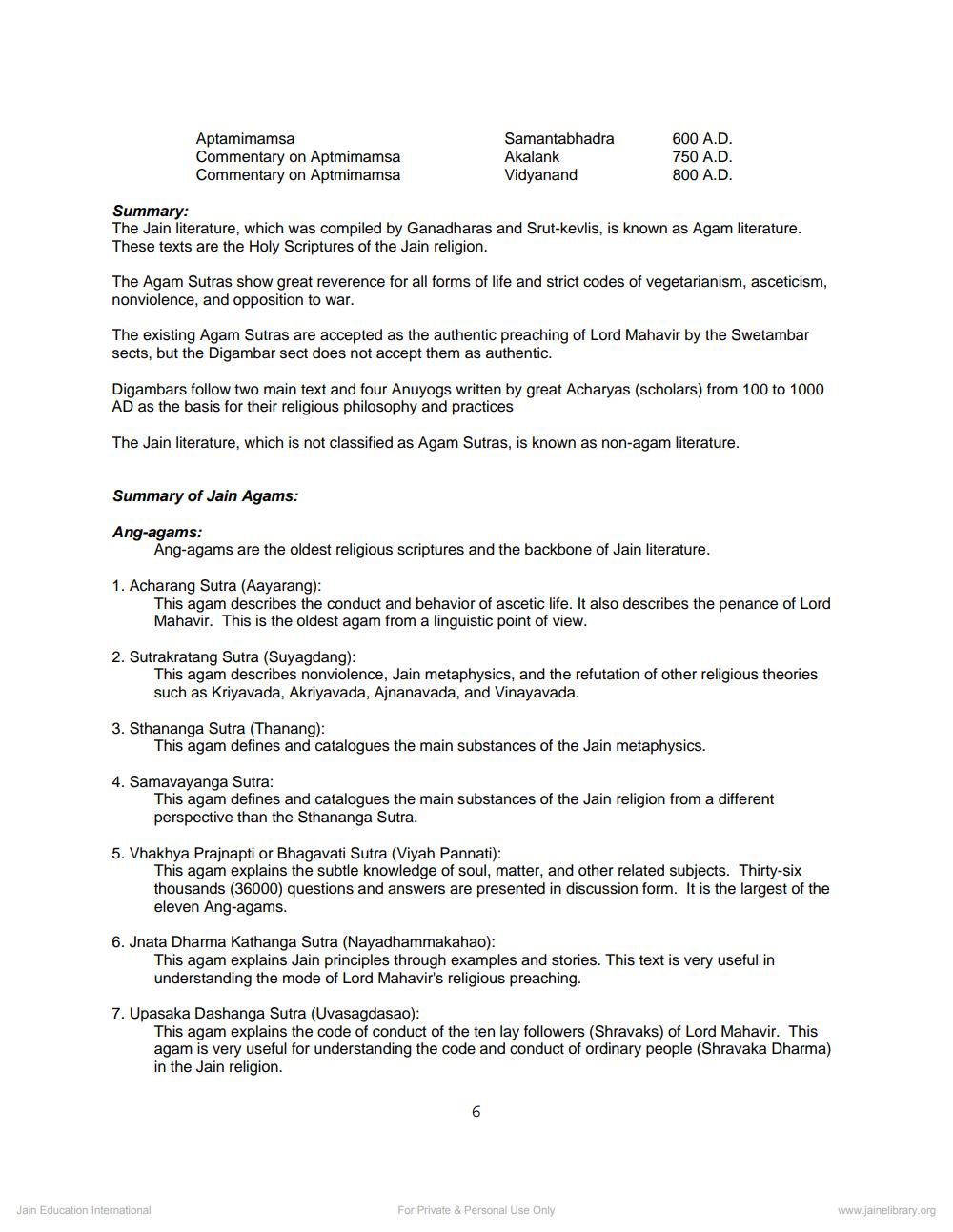________________
Aptamimamsa Commentary on Aptmimamsa Commentary on Aptmimamsa
Samantabhadra Akalank Vidyanand
600 A.D. 750 A.D. 800 A.D.
Summary: The Jain literature, which was compiled by Ganadharas and Srut-kevlis, is known as Agam literature. These texts are the Holy Scriptures of the Jain religion.
The Agam Sutras show great reverence for all forms of life and strict codes of vegetarianism, asceticism, nonviolence, and opposition to war.
The existing Agam Sutras are accepted as the authentic preaching of Lord Mahavir by the Swetambar sects, but the Digambar sect does not accept them as authentic.
Digambars follow two main text and four Anuyogs written by great Acharyas (scholars) from 100 to 1000 AD as the basis for their religious philosophy and practices
The Jain literature, which is not classified as Agam Sutras, is known as non-agam literature.
Summary of Jain Agams:
Ang-agams:
Ang-agams are the oldest religious scriptures and the backbone of Jain literature.
1. Acharang Sutra (Aayarang):
This agam describes the conduct and behavior of ascetic life. It also describes the penance of Lord Mahavir. This is the oldest agam from a linguistic point of view.
2. Sutrakratang Sutra (Suyagdang):
This agam describes nonviolence, Jain metaphysics, and the refutation of other religious theories such as Kriyavada, Akriyavada, Ajnanavada, and Vinayavada.
3. Sthananga Sutra (Thanang):
This agam defines and catalogues the main substances of the Jain metaphysics.
4. Samavayanga Sutra:
This agam defines and catalogues the main substances of the Jain religion from a different perspective than the Sthananga Sutra.
5. Vhakhya Prajnapti or Bhagavati Sutra (Viyah Pannati):
This agam explains the subtle knowledge of soul, matter, and other related subjects. Thirty-six thousands (36000) questions and answers are presented in discussion form. It is the largest of the eleven Ang-agams.
6. Jnata Dharma Kathanga Sutra (Nayadhammakahao):
This agam explains Jain principles through examples and stories. This text is very useful in understanding the mode of Lord Mahavir's religious preaching.
7. Upasaka Dashanga Sutra (Uvasagdasao):
This agam explains the code of conduct of the ten lay followers (Shravaks) of Lord Mahavir. This agam is very useful for understanding the code and conduct of ordinary people (Shravaka Dharma) in the Jain religion.
Jain Education International
For Private & Personal Use Only
www.jainelibrary.org




